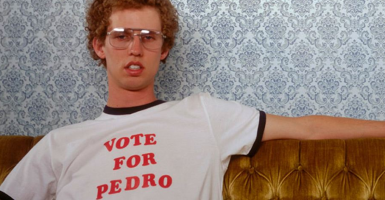How Labor Day Became A US Holiday
Labor Day is a federally recognized holiday in the United States. However, it wasn't always that way, learn how it became a holiday.
This article is more than 2 years old

Labor Day is a celebration that provides many with an extra day off to enjoy the last remnants of summer. But as we lounge in the sun today, the holiday’s history is often forgotten. This annual day-off has more to it than just relaxing and going to see a parade; the holiday started from unofficial labor celebrations that transformed into nationwide recognition over the years.
Labor Day usually lands right at the beginning of September or the end of August. This year, the holiday weekend is between September 3rd and September 5th. The very first Labor Day in the country was celebrated in 1882 but didn’t become an official holiday until 1894. Where did this celebration come from, and how did it get federally recognized? Labor activists started observing the holiday years before it was nationally instated. Once it became more widely known, Oregon became the first state to instate the holiday lawfully in 1887. New York, Massachusetts, and Colorado soon followed the passing of the Oregon bill with their own Labor Day legislation.
Labor Day is honored for numerous reasons, but most revolve around American labor unions’ fight against inhumane working conditions in the late 19th century. Pushback from unions and workers’ rights activists shaped the current work week and ethical workday practices today. 40-hour full-time work weeks, mandated break time, and getting paid overtime are all recent establishments that Americans fought for, an accomplishment that Labor Day unabashedly honors. Many activists were involved in creating this holiday and the working conditions those people have struggled for. Still, it’s unclear who were the first activists to push for the holiday’s national celebration.
Some suspect that the person who had the initial idea for Labor Day was Peter J. McGuire, the general secretary of the Brotherhood of Carpenters and Joiners. Certain records show that this labor activist proposed a celebration that honored “the laboring classes” to praise those often neglected by society. Though this is a standard theory, some believe that it was the machinist Matthew Maguire who initiated the holiday’s celebration. There’s a belief that Maguire proposed the holiday in 1882 while working at the Central Labor Union in New York. Regardless of who presented the initial bills, the holiday is in place to remember all worker’s rights activists and laborers who fought for nationwide worker protections.
After Labor Day was instituted into federal law, the Department of Labor was created. It was the first governmental department by a woman, Frances Perkins. Perkins was an essential force in instructing President Franklin Roosevelt’s shift in public labor policy. Perkins and Roosevelt collaborated on safety protocol after the Triangle Shirtwaist Factory fire in 1911, where over 140 people died. The unfortunate event occurred because management locked exits, an insidious tactic that would prevent workers from taking breaks throughout their shifts.
Though Labor Day is often celebrated in a frivolous manner, its presence is inherently essential to America’s history and transition to more ethical working practices. This holiday highlights labor unions and their imperative function for this nation’s prosperity.









